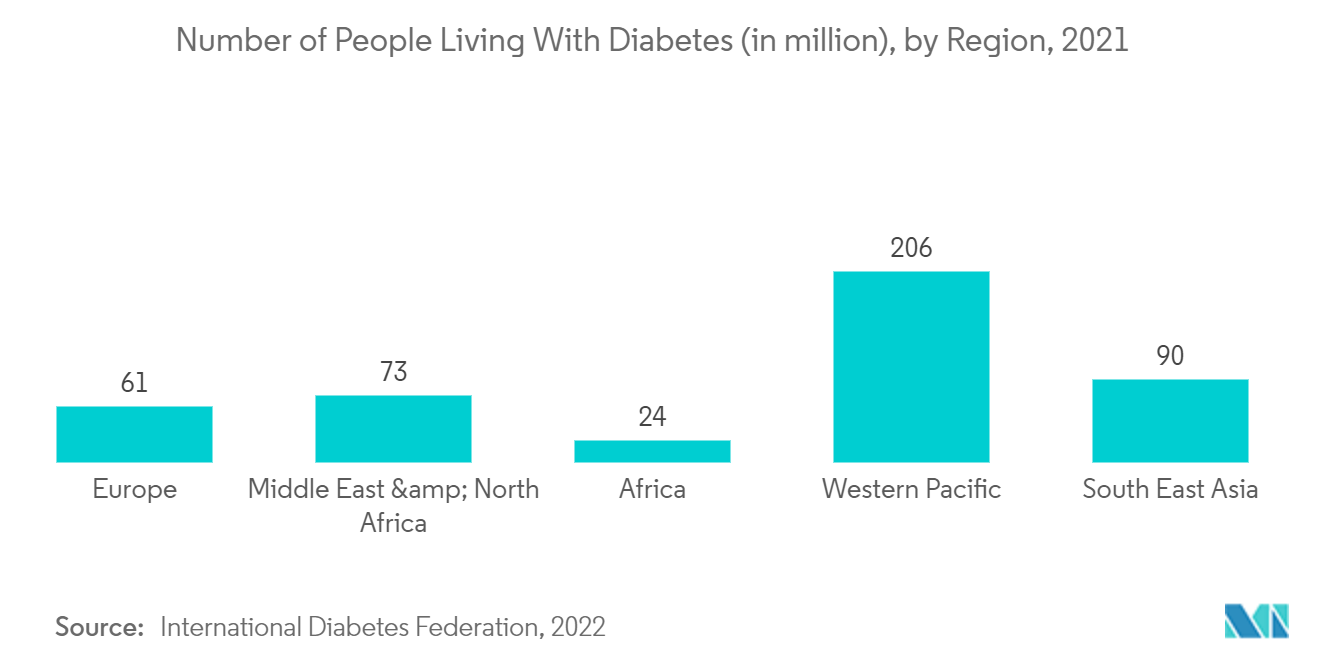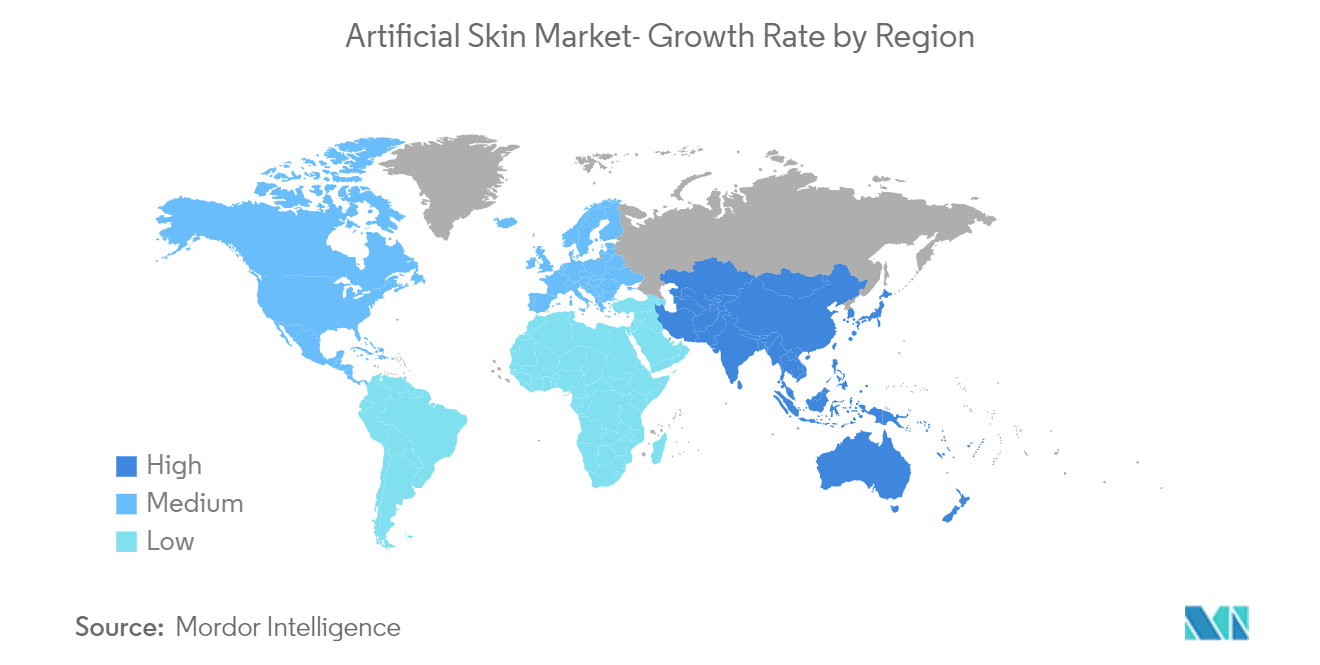Market Trends of Global Artificial Skin Industry
This section covers the major market trends shaping the Artificial Skin Market according to our research experts:
Chronic Wounds Segment is Expected to Witness Growth Over the Forecast Period
Chronic wounds are those that do not undergo a normal, orderly, and timely repair sequence. They are common and often mistreated. The morbidity and associated costs of chronic wounds highlight the need to implement guidelines for wound prevention and management. Common chronic wounds include diabetic foot ulcers, venous leg ulcers, and pressure ulcers. With the increase in the global geriatric population, diabetes, and obesity, the prevalence of chronic wounds has been significantly increasing. For instance, according to the study titled, "The current burden of diabetic foot disease" published by the National Library of Medicine in February 2021, diabetes causes severe and diffuse disease below the knee. The lifetime risk of developing a diabetic foot ulcer is between 19.0% and 34.0%. Artificial skin is one of the potential treatments for diabetic foot ulcers. It helps to stimulate the regeneration of lost tissue and replace the wound with functional skin. Therefore, such an instance is anticipated to drive the demand for artificial skin for chronic wounds, thereby propelling the segment's growth.
Venous leg ulcers are also another common chronic wound after diabetic leg ulcers. Venous leg ulcers are open lesions of the lower extremity that account for 60.0% to 80.0% of all leg ulcerations that occur in the presence of venous disease. According to the study titled, "Prevalence and incidence of venous leg ulcers-a protocol for a systematic review" published in May 2021, around 60.0% of venous leg ulcers result in chronic wounds. Similarly, as per the study titled " Venous Leg Ulcers: Advanced Therapies and New Technologies" in November 2021, the prevalence of venous leg ulcers differs between 1.5% and 3.0% among the general population. Double-layer artificial skin, used in conjunction with a compression bandage, helps to accelerate the healing of venous leg ulcers when compared to simple dressing with compression. Therefore, increasing cases of venous leg ulcers are expected to spur the demand for artificial skin for chronic wounds.
Hence, due to the abovementioned factors, the chronic wounds segment is expected to witness significant growth over the forecast period.

North America is Expected to Dominate the Artificial Skin Market
North America is expected to dominate the overall artificial skin market throughout the forecast period. The growth is due to factors such as increasing chronic wounds due to the growing number of chronic diseases and the rising geriatric population. For instance, as per the report published by the Trust for America's Health Organization in 2020, the United States adult obesity rate represents around 42.4%, and it is for the first time the national rate has passed the 40.0% mark. Obesity is one of the major causes of triggering chronic wounds as it leads to vascular insufficiency. Vascular insufficiency results in poor oxygenation, which leads to delays in normal wound healing and even tissue necrosis. Therefore, an increasing number of obesity cases in this region is anticipated to propel market growth over the forecast period.
Key product launches, a high concentration of market players or manufacturers' presence, acquisitions and partnerships among major players, and a high number of chronic wounds in the United States are some of the factors driving the growth of the artificial skin market in the country. For instance, chronic wounds pose a significant burden to patients, healthcare professionals, and the United States healthcare system, affecting 5.7 million patients and costing an estimated USD 20.0 billion per year. Furthermore, in June 2021, the United States Food and Drug Administration approved StrataGraft for the treatment of adult patients with thermal burns containing intact dermal elements. Therefore, such factors and development are anticipated to spur the market's growth in the United States.
Therefore, owing to the aforesaid factors, the growth of the studied market is anticipated in the North American region.


